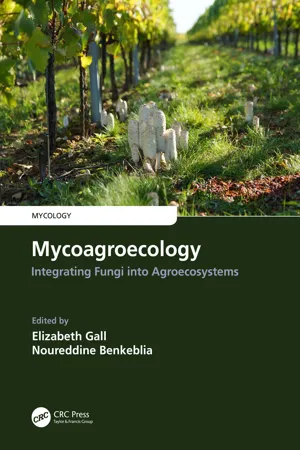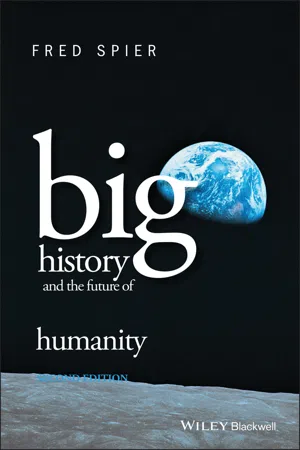Geography
Second Agricultural Revolution
The Second Agricultural Revolution, which took place from the late 17th century to the late 19th century, was characterized by significant advancements in farming techniques and technology. This period saw the widespread use of new tools, such as the seed drill and iron plow, as well as the adoption of crop rotation and selective breeding. These innovations led to increased agricultural productivity and laid the foundation for modern industrial agriculture.
Written by Perlego with AI-assistance
Related key terms
Related key terms
1 of 4
Related key terms
1 of 3
9 Key excerpts on "Second Agricultural Revolution"
- I.R. Bowler(Author)
- 2014(Publication Date)
- Routledge(Publisher)
On a broader scale, and using measures such as crop and livestock yields, labour input and capital formation, it is possible to show that the eighteenth and early nineteenth centuries comprised the major period of rising agricultural productivity throughout Western Europe (Goodman et al. 1987). Placing the Second Agricultural Revolution in the early decades of the nineteenth century also enables a linkage to be formed with parallel developments in the manufacturing sector which followed the Industrial Revolution. Indeed, the industrialization of the broader economy and society in the nineteenth century had a wide range of consequences for agriculture throughout Western Europe, especially through the urbanization of the workforce, the rising demand for food from that population, the improvement of transport systems, as well as the development of new agricultural technologies, including horse-drawn farm machinery. From this perspective, therefore, the creation of a commercial market for food among a growing urban-industrial population was an essential feature of the Second Agricultural Revolution. Even so, Bairoch (1973) maintains the argument that the Second Agricultural Revolution occurred earlier in the seventeenth century, and was subsequently absorbed into the broader social and economic developmental processes that swept Western Europe following the Industrial Revolution.The focus on agricultural innovations to define the location and timing of a Second Agricultural Revolution can have a number of unfortunate consequences. For example, there is always a time-lag between the initial adoption of an innovation, its spatial diffusion, and consequently its impact on the economic and social organization of a country or region. Thus, while historians such as Ernle and Toynbee may be correct in placing the origins of the Second Agricultural Revolution in eastern England between approximately 1760 and 1815, the wider impact of these developments on other regions of the United Kingdom (UK) came in later years. In addition, innovations tend to focus attention on the inputs to farming rather than the outputs, whereas the latter, especially the productivity of the factors of production (land, labour, capital) can be of equal importance in defining a period of accelerated change. Also, by focusing on technical innovations in farming, attention is drawn away from equally important features of the Second Agricultural Revolution. For example, the ‘revolutionary’ developments in West European farming occurred at a time when the feudal landholding system was being replaced by private property rights. The medieval open fields, with their strip-farming, communal farming practices and common lands, were progressively replaced by enclosed, consolidated, individually owned or tenanted farms, with land given a price in its own right. As Tracy (1982: 8) observes: ‘the [new] structure of agriculture, with large farms and a class of wealthy landowners ready to invest in their estates, made ... farming particularly receptive to technological progress’. The new agrarian system transformed an essentially subsistence or peasant agriculture which had been only partially integrated into a market economy.- eBook - ePub
Events That Formed the Modern World
From the European Renaissance through the War on Terror [5 volumes]
- Frank W. Thackeray, John E. Findling, Frank W. Thackeray, John E. Findling, Frank W. Thackeray, John E. Findling(Authors)
- 2012(Publication Date)
- ABC-CLIO(Publisher)
6 The Agricultural Revolution, c. 1750
Introduction
When the word “revolution” is mentioned, one usually thinks of tumult, chaos, and confusion in a rapidly changing environment frequently characterized by bloodshed and the use of great force. By those standards, the agricultural transformation of the eighteenth century does not qualify as a revolution. Rather, the changes that define the Agricultural Revolution came slowly and gradually over the decades. There was little disorder and no bloodshed, and reason rather than force prevailed. Nevertheless, few can deny that “an assertedly momentous change,” the dictionary definition of revolution, did in fact occur.The Agricultural Revolution comprised a new and radical approach to farming and animal husbandry. At the start of the eighteenth century, the vast majority of Europeans were engaged in agriculture. With the possible exception of Holland, at least 80 percent of Europeans farmed, and that percentage increased as one moved in an easterly direction across the Continent.Farming in 1700 proceeded in a manner little different from how it had proceeded several hundred years earlier. Hordes of peasants worked the land, but they received only a meager bounty in return. Yields were low, and crop failure due to flood and drought remained common. When that occurred, famine was a possibility. Fields, which were open as opposed to enclosed, were divided into numerous long, narrow strips and were farmed communally. The village as a whole decided what to plant, when to plant, and when to harvest. This open-field system meant that the peasants would usually be able to survive, but it precluded more efficient and hence more productive forms of agriculture. Soil exhaustion remained a major problem, and the eighteenth-century peasant, like his medieval counterpart, dealt with this by rotating crops so that every other year, or every third year, a field would lie fallow. Although this preserved the soil, it also withdrew from production annually anywhere from 33 percent to 50 percent of the arable land. Each village had its common, or meadow and pasture lands, where a variety of animals—individually owned by the peasants—intermingled freely as they grazed. - eBook - ePub
The Dynamics of Agricultural Change
The Historical Experience
- David Grigg(Author)
- 2019(Publication Date)
- Routledge(Publisher)
Although most historians have emphasized the slowness of change in agriculture, there have been periods when it has greatly accelerated, and these phases have been dubbed periods of agricultural revolution. Unfortunately there is often little agreement as to when these crucial changes began. This may be partly explained by a failure to distinguish between the introduction of a new farming method and its general adoption, as has been noted (pp. 153–63). More commonly it is due to a failure to specify exactly what is meant by an agricultural revolution, and how the rate of change is to be measured. But such problems are dealt with by economists in their studies of modern agricultural change, and it may be that their approaches can be applied to the study of agricultural change in the past.Some semantic difficulties
Part of the problem of defining the course of an agricultural revolution arises from failure to specify what is changing and where. Much of the historiography of the agricultural revolution in Europe has been concerned with the obstacles to improvement, and the rate at which new methods have been adopted. As has been seen earlier (pp. 153–63) there may be a very considerable lag between the introduction of a new technique and majority adoption. There will thus be a lag between the innovation and the time when it influences regional or national productivity. Further, few periods of rapid agricultural change are characterized by the adoption of only one new farming method. More usually the adoption of a number of new inputs, commonly interlocked, is characteristic. They may however spread at different rates. Thus the success of the green revolution in Asia in the 1960s and 1970s was not a matter of merely adopting an improved variety of wheat or rice. To increase yields it was necessary also to have irrigation, fertilizers and pesticides. The unequal geographical spread of these inputs accounts for the very varying success of the new hybrid varieties.It is also necessary to specify the area that is being studied when studying the course of an agricultural revolution. Thus early historians spoke of an agricultural revolution in England after 1760; yet the evidence of an accelerated adoption of new techniques was drawn mainly from eastern England, and within that region, from East Anglia. Even within this region techniques were adopted at different rates upon light soils and heavy soils (see pp. 60–5). The new techniques were essentially concerned with arable farming. Yet much of midland and western England, and in particular upland England, had little cropland, and for these areas the agricultural revolution of the eighteenth century had limited significance. - eBook - ePub
The Sustainability and Development of Ancient Economies
Analysis and Examples
- Clement A. Tisdell, Serge Svizzero(Authors)
- 2023(Publication Date)
- Routledge(Publisher)
During the second phase in the Near East, irrigation was improved (Wittfogel, 1957), ploughing was introduced using oxen, and the development of the extraction of secondary products from domestic animals (such as dairy items and wool) (Sherratt, 1983), as well as their use for traction, contributed significantly to increased division of labour and production. Furthermore, greater trade and diffusion of productive knowledge, as well as greater specialization in production, boosted productivity. Consequently, the economic contribution of technological growth was in all probability (in the second phase) much greater than assumed by Childe and therefore less of a deterrent to population growth than he supposed. Apart from this, other economic changes which added to productivity became increasingly important in the second phase of the Agricultural Revolution. Third, the question has arisen of whether Childe left out of consideration an important influence on population growth in the second phase of his model. Bocquet-Appel (2009) argues that once farming became well established, increased mortality due to diseases associated with greater density of population was the main factor retarding population growth. However, prior to this, in the period in which farming was becoming more established but population densities were lower, population increase was rapid due to a rise in the birth rate, lower mortality as a result of better nutrition, and the still low prevalence of diseases associated with population density. In this period, Neolithic Demographic Transition occurred and there was a demographic shift in areas experiencing agricultural development from a low relatively stable equilibrium level of population to a significantly higher one once farming was well developed. Figure 8.1 captures the essence of Bocquet-Appel’s theory. Bocquet-Appel (2009, p - eBook - ePub
Mycoagroecology
Integrating Fungi into Agroecosystems
- Elizabeth Gall, Noureddine Benkeblia, Elizabeth Gall, Noureddine Benkeblia(Authors)
- 2022(Publication Date)
- CRC Press(Publisher)
Repeated food crises and an expanding human population made increased crop production essential, so the ecological concept of sustainability was sacrificed in favor of field expansion and yield improvements. Technologies like hybrid seed varieties, irrigation, mechanization, and artificial fertilizer were adopted around the world to increase production of staple food crops. The agricultural breakthroughs of this century, which significantly increased global food availability and reduced the amount of land required to produce food (Figure 9.1), are jointly referred to as the Green Revolution. FIGURE 9.1 Thanks to many technological advancements and increased input availability, the amount of land required to produce commodity crops (see Chapter 8 in this volume) dropped significantly during the Green Revolutions of the 20th century. (Chart reproduced under the CCBY license from Ritchie, H., and M. Roser. 2019. Land Use. Our World in Data. Global Change Data Lab. https://ourworldindata.org/land-use [accessed March 18, 2022].) Unfortunately, many of these techniques and the policies governing their use led to long-term losses in soil fertility, water cleanliness, and wild habitat quality. Today there are calls for a “Second Green Revolution”, one in which nutritious yields and ecological sustainability will be given equal importance. This chapter outlines some of the historical, social, and economic paths that led to the Green Revolutions of the 20th century. Like many social revolutions, these were multinational and sometimes global movements with no clear beginning or end dates. Some authors consider the process as one long, nebulous Green Revolution. However, in our view, there are two clearly definable movements that produced dramatic increases in yields for the crops considered most vital at the time - eBook - ePub
Geographies of Agriculture
Globalisation, Restructuring and Sustainability
- Guy Robinson(Author)
- 2014(Publication Date)
- Routledge(Publisher)
2 The changing focus of agricultural geography2.1 ‘Traditional’ agricultural geographyThis chapter focuses on how the content of agricultural geography has evolved post-1945, thereby providing a context for the more extended consideration of key components of agricultural change in the rest of the book. Emphasis is placed upon how there has been a move from a ‘traditional’ form of agricultural geography to new approaches embracing different ideas from across the social sciences.A standard definition of agricultural geography in the mid-1980s referred to ‘the description and explanation of spatial variations in agricultural activity over the earth’s surface’ (Ilbery, 1985a, p. 1). This interpretation was based largely on consideration of two major avenues of enquiry that had dominated agricultural geography in the twentieth century:• Location and context, in which emphasis was placed on the regional characteristics of agricultural activities, especially broad trends and tendencies (Coppock, 1968; 1971).• Explanations of agriculture’s great diversity, through consideration of relationships between the large number of relevant variables associated with social, economic, physical and historical factors affecting agriculture (e.g. Grigg, 1992a).The regional focus in the first of these can be traced to the first time that a specialism specifically termed ‘agricultural geography’ played a leading role in the development of geography as an academic discipline. This was in the 1920s when agricultural geography was one of the principal specialisms that emerged as part of the growth of regional geography as the discipline’s central paradigm (Johnston, 1997, pp. 44–52). An example of this was Baker’s (1926) work on the recognition of ‘agricultural regions’ in different parts of the world. The region became the central focus of study for agricultural geographers, with both singleattribute and multi-attribute regions being recognised. Indeed, for the first half of the twentieth century agricultural geography involved regional delimitations following large-scale mapping of distributions of crops and livestock (e.g. Robertson, 1930) and the classification of agricultural systems (e.g. Whittlesey, 1936). Prevailing ideas on environmental determinisim emphasised the physical controls exerted upon the nature of agricultural activity. Description of agricultural variations was important, with land-use mapping of significance in some countries, a good example being the Land Utilisation Survey of Great Britain, begun in the 1930s by the geographer L. D. Stamp (1948). - eBook - ePub
The Birth of a New Europe
State and Society in the Nineteenth Century
- Theodore S. Hamerow(Author)
- 2016(Publication Date)
- The University of North Carolina Press(Publisher)
It could also reduce social conflict and mitigate international strife. For “he who no longer finds a place at the table of society does not simply yield to starvation. As an individual he becomes a thief and murderer, or he emigrates in large masses, or he becomes a conqueror. Every page of world history shows the dreadful effect of this horrible law in the streams of blood with which man has had to water the soil he did not know how to keep fruitful.” The improvement of husbandry would thus serve the moral purposes of society by satisfying its material needs. 13 The final element in the agricultural revolution was the mechanization of farming, a process that most closely resembled what was happening in manufacture. In the second half of the eighteenth century, designs and patents to improve farmers’ tools began to multiply. There were ploughs for drainage and trenching, threshing machines to replace the flail, chaff cutters to prepare straw for fodder, and a dynamometer to measure the movement of the share and moldboard through the soil. Early in the nineteenth century, engineers turned to the problem of mechanizing the harvest, their efforts culminating in Patrick Bell’s reaper of 1828 in Great Britain and the more famous one designed by Cyrus McCormick in the United States in 1834. In 1841 the Royal Agricultural Society of England held a competitive trial for threshing machines, which had already reached a high level of technical efficiency. At a second trial in 1848, the threshing drums were driven by steam, and the following year the steam plough made its appearance. In the 1870s came the automatic twine binder, representing a considerable saving of labor, and the combination harvester, which in a single operation cut a swath of grain, threshed, cleaned, and sacked - eBook - ePub
- Fred Spier(Author)
- 2015(Publication Date)
- Wiley-Blackwell(Publisher)
As soon as the original domestication had taken off, people began to move crops and animals to other places that provided good circumstances. This was the beginning of the globalization of domesticated plants and animals. Today, most domesticates have been transported to wherever they can be grown, while many types of agrarian produce are now shipped globally. In the early phase of agriculture, because of a lack of suitable means of transport, the large-scale movement of produce over larger distances was not feasible. The spread of cultivated plants and animals around the world was usually followed by the often unplanned expansion of their predators, such as insects, microorganisms and mice.Social Effects of the Agrarian Revolution
The transformation into an agrarian regime led to incisive social change. First of all, children became a great deal more productive. In gatherer-hunter societies, children were often a burden. But in agricultural societies they could already contribute considerably to the household at an early age by helping to sow, weed, harvest and tend animals. This change removed the constraint on population growth and actually put a premium on having more offspring, especially if the children were to provide care for their elderly parents. As a result, human population numbers began to increase rapidly. It has been estimated that the total human population would have amounted to between 1 and 10 million people around 10,000 years ago, while between 5 and 20 million people would have inhabited our planet some 5,000 years later.22In the terms of US anthropologist Eric Wolf (1923–99 CE ), while production remained kin-ordered, many other aspects of the social regime changed almost beyond recognition.23 Most importantly, perhaps, the early cultivators became strongly tied to the land they worked. As a consequence, they became more tightly bound to one another. Their villages became ‘social cages,’ in which people lived in larger numbers and closer together than ever before.24 - eBook - ePub
- Tom Kemp(Author)
- 2014(Publication Date)
- Routledge(Publisher)
Chapter Two Agrarian revolution and industrializationBefore industrialization society was made up predominantly of people who obtained their living from tilling the soil and raising animals; that part specialized in other pursuits depended for its support upon the surplus extracted by one means or another from the direct producers. The period immediately preceding industrialization in Europe, the ‘pre-industrial’ period, saw important changes in the agrarian structure, in an uneven way, but suggesting that changes of a certain kind and in a certain direction were necessary pre-conditions for it. In a summary way it can be claimed that traditional agriculture, carried on mainly by the peasantry, producing for household use and local consumption, had to be superseded by a more commercialized agriculture, producing partly for the market, if favourable conditions for industrialization were to come into being. This process was not only uneven between regions but it was spread over a long period of time, including that in which industrialization was going on, and, in a sense, where the peasantry survives, has still not been wholly completed.For centuries before industrialization began there is a history of settled agricultural communities in most parts of Europe. Although in many places new land was still being brought into cultivation this was small in extent compared with the area on which a setded agrarian life had been going on for a thousand years or more. Many traits of European agriculture, resulting from an adaptation of man to prevailing conditions of the soil and the climate in the earliest times, had a pretty well continuous existence through this time. For instance, this was an area of dry farming which did not require extensive irrigation works and which was based on a combination of cereal cultivation with animal husbandry. It thus lent itself to the establishement of selfcontained rural communities which produced enough to support a ruling class of landowning warriors. In the period after the decline of the Roman Empire there developed the peculiarly European variety of feudalism consisting of the imposition of manorial organization on the groundplan of the village community of an earlier period of tribal settlement. In turn, European feudalism displayed many local variations and began to change as a result of many different factors with unequal local weights.
Index pages curate the most relevant extracts from our library of academic textbooks. They’ve been created using an in-house natural language model (NLM), each adding context and meaning to key research topics.
Explore more topic indexes
Explore more topic indexes
1 of 6
Explore more topic indexes
1 of 4








